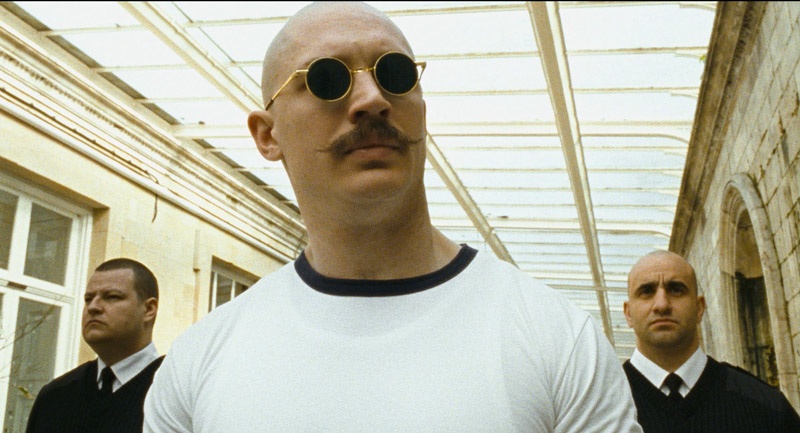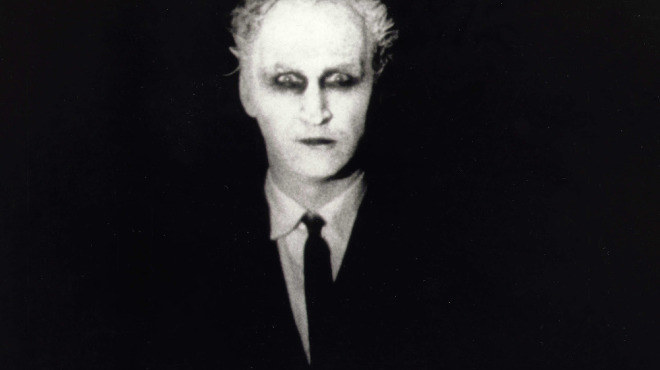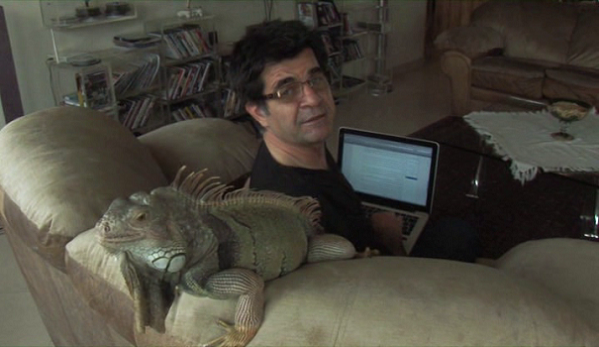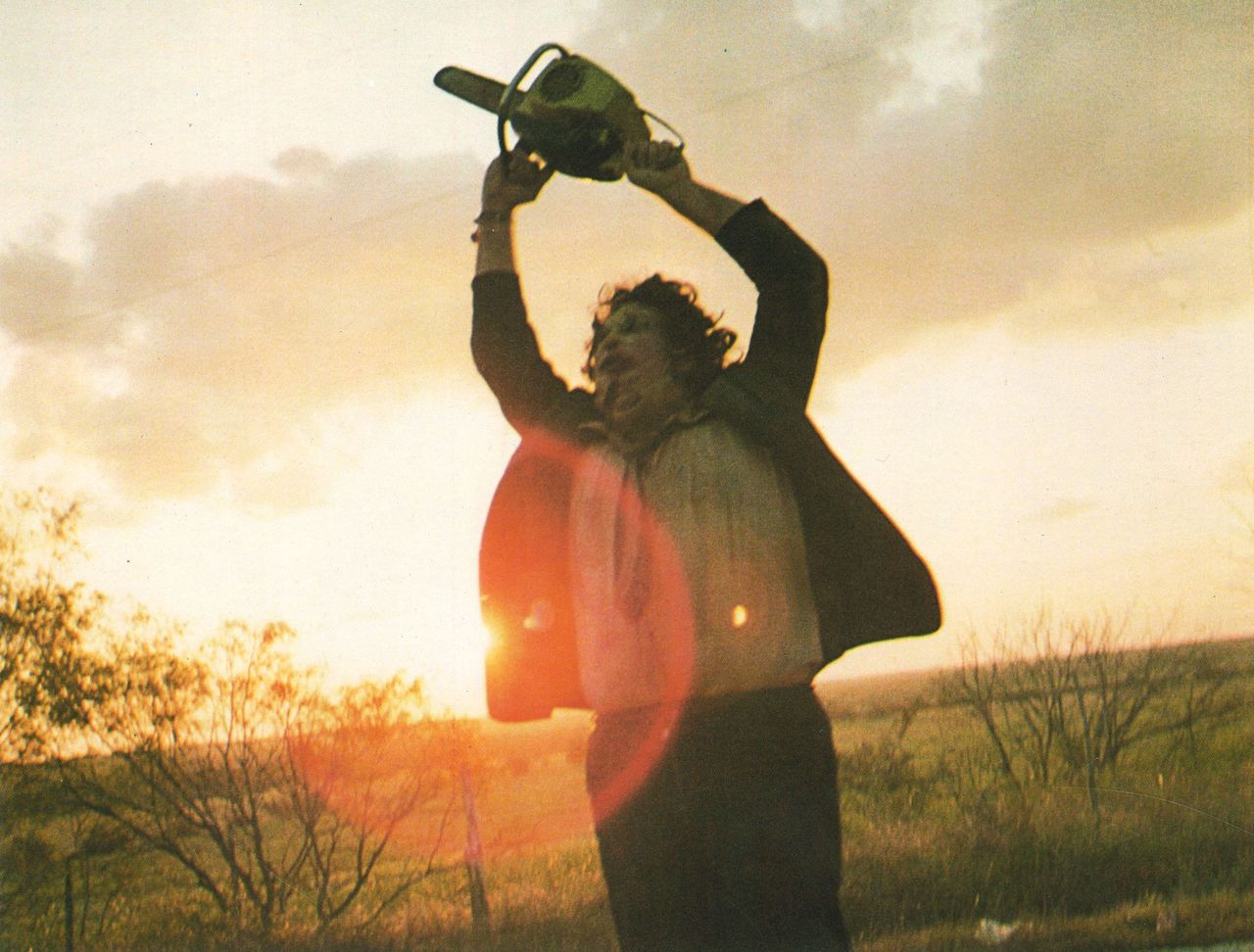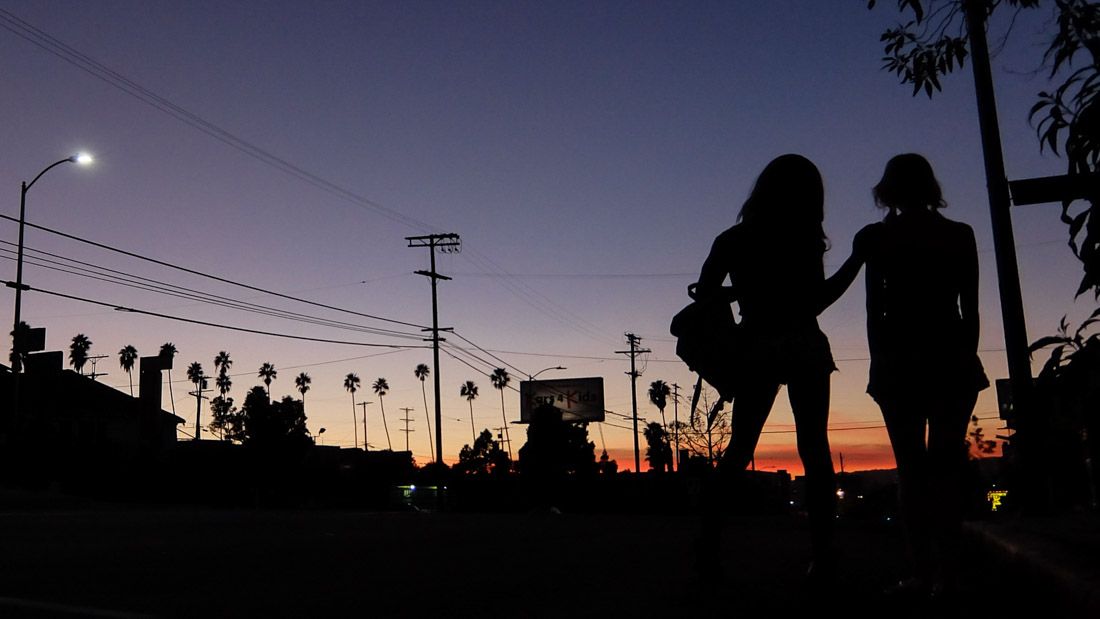5. Bronson (2008, Nicolas Winding Refn)
Budget: $230,000
Nicolas Winding Refn is a very divisive figure among film lovers. Some feel that his emphasis on atmosphere and visuals over character, plot and dialogue are ‘style over substance’. A criticism that doesn’t hold much water since one of his best films is a character study that proves that style is substance.
Bronson is about Micheal Peterson, better known under his boxing name of Charles Bronson, Bronson has been called Britain’s most violent prisoner and has been in jail since 1973 and has only spent 69 days as a free man since then. Mostly because he frequently picks fights with both the guards and other inmates and has taken hostages more than once.
Charlie also tries to get himself arrested whenever he is released since he thinks he belongs to the jail. Refn explores why a man would actively seek out imprisonment and how Bronson sees himself as an artist and his violence as an art.
The film is extremely theatrical and breaks the fourth wall on several occasions with Bronson standing on a literal stage and addressing the audience while in clownish makeup. The lighting and camera work is also extremely dramatic in typical Refn style.
Tom Hardy does an amazing job in the lead role. So much so that Bronson himself reportedly shaved of his iconic moustache and mailed it to Hardy so he could use it in the film.
Bronson helped Refn make a name for himself. Before Bronson, he was fairly famous and successful in his home country of Denmark for his gritty Pusher trilogy, but with Bronson he began to gain attention worldwide. Eventually this allowed him to make Drive, his most successful film to date.
4. Carnival of Souls (1962, Herk Harvey)
Budget: $17,000
Carnival of Souls is a surreal horror film about a young woman who is the sole survivor of a car accident that killed several of her friends. She attempts to move on and forget the tragedy but wherever she goes, she is followed by a mysterious specter and has visions of phantoms rising from their watery graves to perform a dance macabre to twisted and cacophonous organ music. Her life becomes increasingly strange and nightmarish until she isn’t sure if she’s going insane or being haunted.
Herk Harvey was making PSAs and industrial films for a living. One day when driving back home to Kansas after completing a film in California, he saw an abandoned boardwalk carnival. He was immediately struck by the eeriness of the place and decided that he had to make a horror film by using it as the setting. He brought the idea to his friend and co-worker John Clifford and together they developed a script by using the carnival as a starting point.
After raising a few thousand dollars, he hired a bunch of unknown and inexperienced actors, most of them locals, and started filming. Harvey use a Arriflex camera which was favored by documentary and newsreel crews, because it was small and light enough to be easily carried around by a single person, even in hard conditions such as on a battlefield. Harvey himself also played the role of one of the main phantoms in the film.
Sadly Harvey never made another feature film and Carnival of Souls went mostly unnoticed on its initial release. Because the film mistakenly had no copyright on it when released, it became public domain which means that it’s widely and easily available but also that it’s hard for any of the people involved to make much of a profit from it.
3. This is Not a Film (2011, Jafar Panahi)
Budget: Some pocket lint and an old shirt button.
This is Not a Film is not a low-budget film. It is a no budget film. This is Not a Film is a documentary about Iranian filmmaker Jafar Panahi. Panahi is under house arrest because he attempted to make a film criticizing the government. He was originally sentenced to six years in prison but international outrage pressured the Iranian government to allowed him to serve his sentence at home.
However the government also banned Panahi from making any films for the next twenty years under threat of further jail time. This is why this film is not a film, because if it was a film, he would be breaking the law and could be sent away to jail for a very long time. In fact the had to be smuggled out of the country on a flash drive hidden in a cake to avoid raising any suspicion.
Large portions of the film simply showcase the boredom of life under house arrest with Panahi doing everyday chores, but as the film goes on, he can’t help but discuss his passion for film. He talks about the films he has made in the past, some of which are considered classics of Iranian cinema, and how they relate to his current situation.
He also talks in length about the films he had planned but can no longer make because of the ban and the extreme frustration he feels because of it. This then leads into talk about the nature of cinema and what it is that makes films what they are.
Since then Panahi has made a second film about his house arrest. So far the government has not sent him back to jail but both This is Not a Film and his most recent film are banned in Iran.
2. Texas Chainsaw Massacre (1974, Tobe Hooper)
Budget: $300,000
The Texas Chainsaw Massacre has been cited by many as the first slasher. This is arguable as there are older films that are closer to the slasher formula but it is undeniable that the Texas Chainsaw Massacre is one of the greatest horror films of all time. The Texas Chainsaw Massacre revolves around a group of young people who are traveling through Texas. When they pick up a unhinged hitchhiker, they soon become victims of a bloodthirsty clan of cannibal hicks that live in the backwoods.
There is hardly any blood on screen in the Texas Chainsaw Massacre. Sure, there are a few splashes here and there, but the film is very bloodless by the standard of later horror films despite its decent body count. But with brilliant use of editing, production design and editing, the film manages to feel like it’s extremely gory while only showing us a few drops. The whole film feels, sounds and looks disgusting in the best way possible.
One of the most horrific aspects of the film is the macabre human skin and bone furniture and decor in the cannibal house. One of the main inspirations for the film was the serial killer and necrophage Ed Gein who would dig up the recently deceased and create everything from clothing to bowls from the remains. The production designer obtained a large number of animal carcasses from a local vet and used them to create many of the props for the house.
However, since these decorations were made from real rotting flesh and bone, they gave off a extremely unpleasant odor. This situation was then made far worse by the extreme heat of the Texas summer accelerating the rot and the fact that the house was very poorly ventilated. Because of this, being inside for any length of time was almost unbearable.
This became particularly grueling when shooting the dinner scene, because John Dugan, who played the grandfather, totally refused to put on the old age make-up ever again, meaning that all of his shots had to be done in one session. This ended up taking 36 straight hours in sweltering heat constantly breathing the putrid stench of death and decay.
To save money, actors were not payed but promised a certain percentage of the the film’s profits. Due to financial troubles, the producers eventually had to turn to the Bryanston Distribution Company in order to get the film released.
This turned out to be a very bad move as the company was a mafia front that siphoned most of the profits away from the film as part of a money laundering scheme, leaving everyone else with mere leftovers. The cast and crew successfully sued the distribution company years later and received their share of the money.
1. Tangerine (2015, Sean S. Baker)
Budget: $100,000
Tangerine tells the story of Sin-Dee Rella and Alexandra, two transgender prostitutes. It is Christmas eve in L.A. and Sin-Dee has just been released from jail after taking the blame for a crime committed by her boyfriend/pimp Chester. She soon finds out that Chester has been cheating on her with a white cis-woman and goes on a crusade through the city to track both of them down.
Interspersed with the Sin-Dee’s search, we see brief glimpses of the workday of Razmik, an Armenian taxi driver, and the many bizarre people he ferries through the city. Razmik is married and has a small child but is also a regular client of Sin-Dee and Alexandra.
This might sound like a dreary social-problem film, but the reality couldn’t be further from that. Tangerine does not shy from the often dark reality of prostitution, crime and drug dependence, but the tone of the film is much more comedic and anarchic.
The visuals are a colorful, the editing and camera work smooth and fast and the performances often switch between campy theatrical acting style and the more realistic naturalist style at breakneck speeds. It is a film with a real heart that has more energy in some shots than some films have in their entire running time.
Tangerine has received a lot of attention for the fact that it was shot on an iPhone 5s. Baker used a stabilizer rig, special attachable lenses and the FiLMiC pro app to get the best footage possible. There were still some inconsistencies such as the footage occasionally speeding up because the iPhone has trouble properly regulating shutter speed, but the strange effect actually worked for the film so sped up shots were kept in.
Numerous shots in the film feature Sin-Dee and other characters strutting on the sidewalk with the camera following them, these shots were achieved by Baker shooting while riding his bicycle. Another unusual shooting method was the way crane shots were done. They would simply attach the phone to an extendable pole and hope for the best since there was no monitor.
Aside from being cheap, shooting with a unobtrusive and small phone also helped make many of the more inexperienced actors that would’ve been stressed out by a huge expensive camera.
Tangerine shows that we live in a new age for low-budget filmmaking. Film equipment has always been very expensive and one of the main stumbling blocks for many first time filmmakers has been trying to obtain gear. Not only have DSLRs and other prosumer video cameras made it easier for new comers, but Tangerine shows that you don’t even need to a dedicated camera in an age where every other person has a smartphone.
But we shouldn’t merely focus on the considerable technological achievement of a film as beautiful as Tangerine being shot on a phone. Even if Tangerine had been shot on a monstrously expensive professional camera, it would still be a great piece of cinema on the basis of its characters and story.
Author Bio: Gunnjón Gestsson is a amateur filmmaker from Reykjavík, Iceland. He dreams of one day making a film that gets booed at Cannes. He doesn’t like publicans, the first man to throw a plate of peas at him was a publican.
